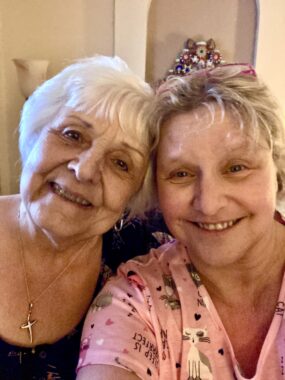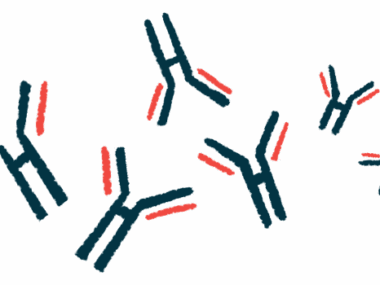Navigating grief after a vasculitis diagnosis and the loss of a loved one
In mourning the life I once had, it helped to know I'm not alone
Written by |

Today I find myself thinking back to four years ago, when I was diagnosed with eosinophilic granulomatosis with polyangiitis.
My father had died the year before, and once a week I’d spend the night at my mom’s. In part, it got me out of the house, as I was too sick to do much else. But more than that, it gave me time with someone who was also deep in grief, just like me.
We’d sit together watching cooking shows, sharing seafood dinners, and quietly talking about a life that no longer felt like our own. We were both trying to navigate unrecognizable terrain, rebuilding our identities after more than 50 years of stability.
When everything changes
My mom had just lost her husband of 57 years, and I had lost my treasured dad. She now had to figure out how to live in a world that felt suddenly and impossibly foreign. Sometimes I’d watch her confront that shift with grace, while other times, I’d see a heavy sadness that took my breath away.
I was 53 at the time. For most of my life, I had faced the world with energy and optimism. I had thrived in leadership roles, built organizations, supported teams, and infused life into the work we did. It was a joy, and it came easy to me. My energy had been abundant, but I wasn’t aware that I’d been taking it for granted.

From left, Carol Jones and her daughter, columnist Sarah Jones, faced immense grief when Sarah’s father passed away and then she was diagnosed with EGPA the following year. (Photo by Sarah Jones)
My wife and I had spent many of our weekends wine tasting in Sonoita, Arizona. (Don’t wrinkle your nose. Callaghan Vineyards, one of our favorites, has been served at the White House for decades!) We’d hiked Arizona’s mountains and poured ourselves into renovating a foreclosed home at the base of the range, on 34 acres of unfiltered desert beauty. (The home was once owned by the author of “Dances with Wolves.”)
Then everything changed when I got sick and my dad died. Eighteen months after getting sick, I was still deep in self-bargaining mode, doing everything I could to get through meetings while squeezing in three or four naps a day. These weren’t luxuries; they were necessary for survival. When fatigue hit, it was like being struck by a truck: I couldn’t speak, think, or move. So much for my plan to work until I was 80.
So I sat with my mom, and sometimes, without a word, tears would fall — from her eyes and mine. We cried for her loss, for my illness, for my wife, and for the life we’d had that had suddenly been ripped away from us.
No one is ever prepared for the moment that life is permanently altered. Relationships shift, priorities are reshuffled, and every aspect of life is redefined.
‘You are not alone’
The other day, I had a chance to speak with some folks who were recently diagnosed with ANCA vasculitis, immunoglobulin G4-related disease, and myasthenia gravis. I saw in them something that I remember so vividly: the grief, confusion, and fear. It meant so much, both to them and to me, to be able to say, “You are not alone.”
It also reminded me that grief must be felt; it’s not something you can avoid or bypass. It needs to rise and be released or it will sit inside you and slowly consume you. Grief isn’t tidy, and it’s rarely linear. With a disease like ANCA vasculitis, it doesn’t appear only once. It reappears in waves, again and again.
Still, there is support, there is therapy, there are books like “How to Be Sick” by Toni Bernhard, and there are community support groups and educational sessions. Importantly, you can also create a personalized quality of life matrix with this current version of you.
Finally, there is power in not going it alone.
My mother and I shared that space for about a year, together yet apart. Sometimes we shared it in silence. Often it was in stillness. But we were side by side, and in time, we slowly began to heal.
Note: ANCA Vasculitis News is strictly a news and information website about the disease. It does not provide medical advice, diagnosis, or treatment. This content is not intended to be a substitute for professional medical advice, diagnosis, or treatment. Always seek the advice of your physician or other qualified health provider with any questions you may have regarding a medical condition. Never disregard professional medical advice or delay in seeking it because of something you have read on this website. The opinions expressed in this column are not those of ANCA Vasculitis News or its parent company, Bionews, and are intended to spark discussion about issues pertaining to ANCA vasculitis.






Leave a comment
Fill in the required fields to post. Your email address will not be published.